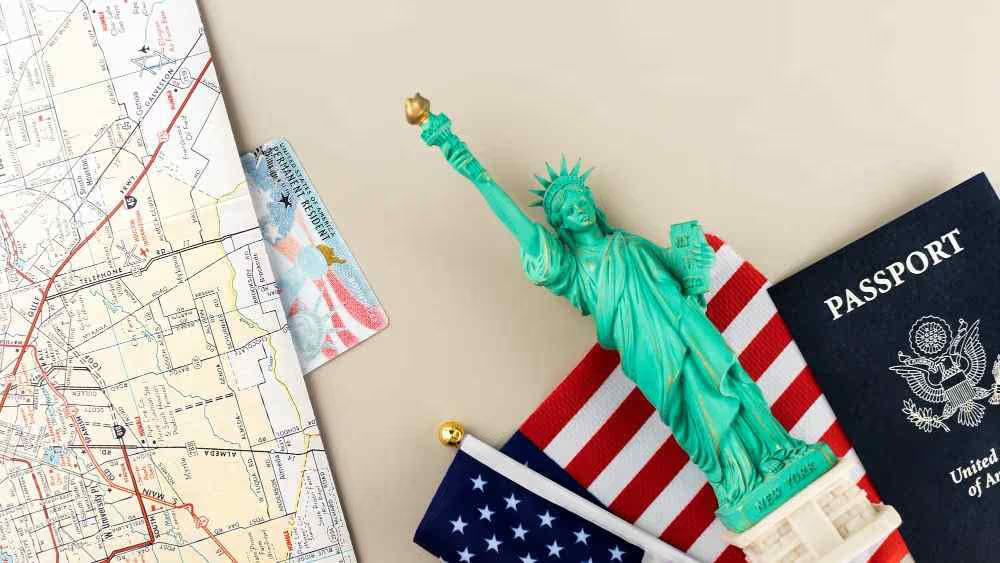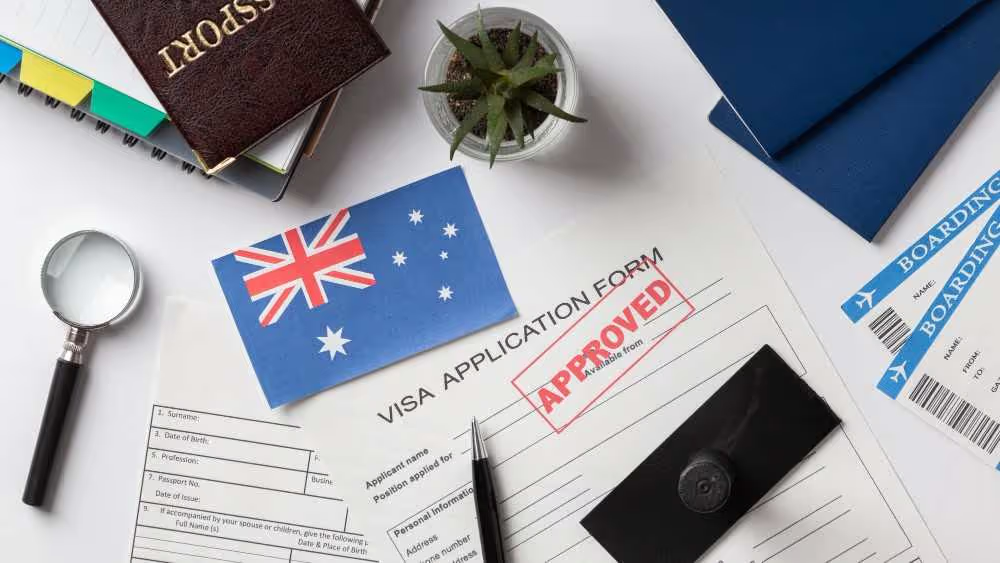.png)
.png)
After USCIS approves your case, do you wonder what the National Visa Center does next? You can find everything you need to know about the NVC in this 2025 guide. It covers what the NVC is, how it works, how long the process takes, and what to expect at each stage

Assume that your Form I-130 was recently accepted. That's a huge win! Now, though, what? The National Visa Center (NVC) can help with this. If you're processing consular documents outside of the United States, NVC is the go-between for your next steps. It collects your documents, verifies your information, and gets your case ready for the U.S. embassy or consulate, much like a visa traffic controller. We'll go over what the NVC does, what you need to do, and how to prevent delays that could throw off your immigration timeline in this Beyond Border’s guide.
What is NVC really?. This division of the U.S. Department of State begins operations as soon as USCIS grants your petition. Before scheduling your visa interview overseas, NVC ensures that all required financial and civil documents are in order. It's comparable to the administrative staff ensuring your file is immaculate before it is presented to a consular official. NVC is a crucial step in obtaining your green card if you're a spouse, parent, or worker applying from outside the United States.
Typically, the NVC receives your case after it has been approved by USCIS. There is nothing you need to do at this moment. As soon as they receive it, they create an invoice ID and a case number. The CEAC(Consular Electronic Application Center) portal login information is then sent to you via email or regular mail along with a welcome letter. The CEAC portal and the NVC portal are not the same, but they are related. The NVC is a physical center that processes immigrant visa applications after they are approved by USCIS. The CEAC is the online portal that applicants use to manage their case, submit documents, and check their status with the NVC. You will fill out the DS-260 form, upload documents, and pay fees here. Although it may seem like a lot, the portal makes it easy. Just be sure to check your email frequently and reply to NVC messages promptly to prevent delays.
Have you ever seen a code such as "MNL2024765432" before? Your NVC case number, which functions similarly to a ticket to the CEAC system, is that number. It enables you to upload files, pay NVC fees, and check the status of your immigration visa. The embassy code is represented by the first three letters of each case number (for instance, MNL for Manila). The case number appears next. Consider it the digital ID for your visa. Keep this number handy and in a secure location because it's difficult to contact NVC if you misplace it.
Logging into the CEAC portal for the first time could be frightening. It's not that difficult, though. Utilize the NVC case number and invoice ID from your welcome letter. Tasks such as completing Form DS-260 (the visa application), paying fees, and uploading supporting documentation will be assigned to you upon your arrival. Although it isn't very ostentatious, the interface functions. Verify that your files are complete, understandable, and adhere to the format and file size specifications. Verify that everything is in order before clicking submit. Correcting errors later may take more time. If you want expert help ensuring everything is flawless from the start, Beyond Border can guide you step-by-step.

You might be wondering, "How long is this going to take?" The country and type of visa you are applying for will affect how long it takes to process your NVC application in 2025. Usually, the review of your documents takes two to four months after you file your case. The timeline for your ongoing processing is displayed here. The most frequent causes of delays are incorrect or missing documents. You'll advance more quickly if your submission is clear and concise. However, this part of the process can take a long time, so you need to be patient.
Attempting to contact a government agency can be like shouting into a vacuum. Some of the NVC's channels do function, though. You will have to wait a long time if you call them. The better option? You can complete the State Department's online Public Inquiry Form on their website. Be succinct and straightforward, and don't forget to include your case number. One to two weeks should pass before you receive a response. The majority of the process is now digital, so sending paper documents to their Portsmouth, New Hampshire address is also an option, though it's rarely required.
Cases appear to be in NVC limbo at times. After sending in your papers, it's possible that you haven't heard anything for weeks. Don't panic first. By signing into your CEAC portal, you can view your messages. Look for requests for missing documents. Send an inquiry if everything appears to be in order but you have been waiting longer than sixty days. You could also seek assistance from your local congressman or attorney. Although it's uncommon, occasionally a little prodding from the appropriate source starts things off. For expert assistance in such situations, you can also reach out to Beyond Border.
The majority of NVC delays could have been prevented, to be honest. Individuals frequently fail to pay the visa and affidavit of support fees, upload documents that are unclear or not in English, or complete the DS-260 form incorrectly. After uploading everything, some people neglect to click "submit." But, these small errors can lead to big delays. So, if you're unclear about things, take your time, check again, and ask questions. Taking an extra day is better than getting caught up in a two-month cycle of fixing mistakes.
The most difficult part can be waiting. What to do after you've uploaded everything, completed the forms, and paid the fees? You wait for your interview to be scheduled by the American embassy or consulate. This could take several weeks or even months, depending on the post office's workload. It cannot be accelerated by a miracle or something. However, while you wait, make sure your passport is still valid, prepare your interview materials, and check your CEAC status. You have to do these things even though it's boring.

If you move after submitting your visa application, you will need to update your address. The location of critical documents and updates must be known by the NVC. You have two options: submit a Public Inquiry Form with your updated address or use the CEAC portal. You may not receive your visa interview letter or other crucial communications if you omit this step. Imagine not even knowing when your interview is scheduled, and your letter ended up at your old address. Nobody wants that nightmare.
In reality, the NVC process can be time-consuming and inconvenient. It is, nevertheless, one of the final things you must complete prior to your interview for an immigrant visa. Maintain organization, pay close attention to instructions, and don't let bureaucratic hold-ups depress you. If you feel stuck or confused, don’t hesitate to reach out to immigration lawyers or reliable services like Beyond Border . Your chances of obtaining a visa are increasing. Thus, inhale deeply, look up your CEAC status, and maintain your focus. You're capable!